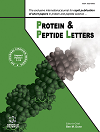
Full text loading...
Canonical Wnt (Wnt/β-catenin) signaling maintains bone homeostasis by promoting osteoblastic activities. The inhibitory factor, Dickkopf-1 (DKK1), enhances bone resorption in malignant diseases. Low-density lipoprotein-related protein (LRP) 5 is antagonized by DKK1. This study aimed to investigate the expression of DKK1 and LRP5 in renal cell carcinoma bone metastasis (RCC-BM).
RCC-BM patients with paired samples of primary and metastatic lesions were selected for the study (RCC-BM group). RCC patients without any metastasis served as the control group (RCC-only group). Immunohistochemical staining with monoclonal anti-DKK1 and polyclonal anti-LRP5 antibody was conducted on paraffin-embedded slides. The staining results were recorded using scoring according to staining intensity in the renal tissue adjacent to the tumor, primary RCC lesions, and RCC-BM lesions.
DKK1 was differently expressed among normal renal tissues, primary RCC, and RCC-BM tissues (p<0.001). The DKK1 expression in primary RCC was significantly lower than that in normal renal tissues (p<0.001) without a difference between the RCC-BM and RCC-only groups. DKK1 expression in bone metastasis was significantly higher than that in primary tumors (p<0.001). For RCC-BM patients, the expression of LRP5 in the primary tumor was significantly lower than that in adjacent renal tissues (p<0.01). The tendency of lower expression was found in primary RCC from RCC-BM patients compared to RCC without metastasis (p=0.073).
A “rebound” pattern of DKK1 expression in bone metastasis lesions and the decreasing LRP5 expression in primary lesions of RCC-BM patients suggested that Wnt/β-catenin signaling was inhibited in RCC-BM. The overexpression of DKK1 and reduced expression of LRP5 suggest that these markers may be useful for the early prediction of RCC-BM.

Article metrics loading...

Full text loading...
References


Data & Media loading...

